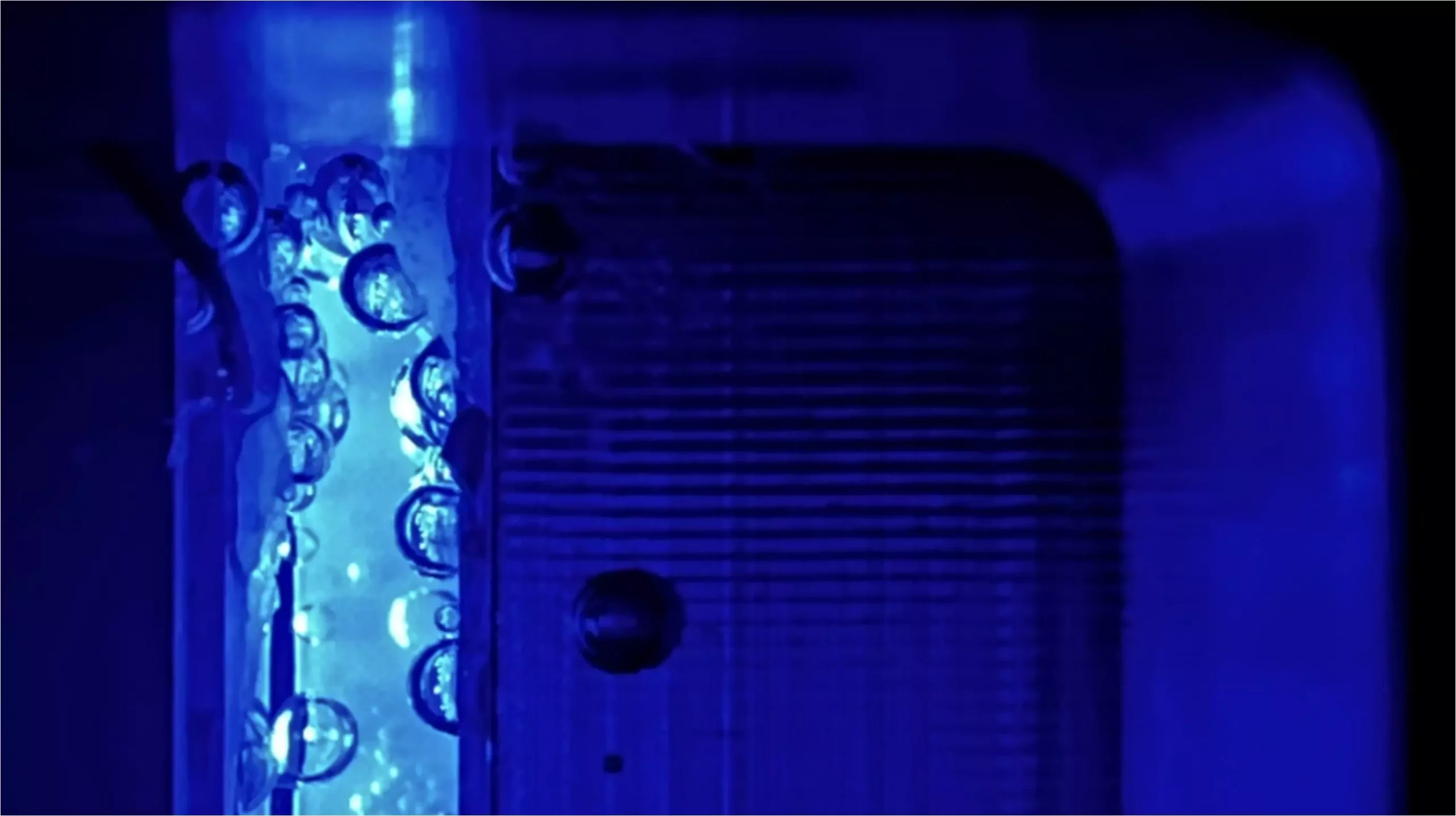In the ongoing quest for sustainable energy solutions, hydrogen stands out as a promising candidate due to its potential to serve as a clean fuel source. Traditionally, hydrogen production has relied on methods that involve fossil fuels or electrolysis of water. One innovative approach is the use of photoelectrochemical cells (PEC), which split water into hydrogen and oxygen utilizing sunlight. This technology mimics the natural process of photosynthesis found in plants, specifically through an artificial mechanism using inorganic materials to achieve the desired chemical reactions.
A significant leap in this field has come from researchers at the Helmholtz Centre Berlin (HZB), who have investigated the performance of PECs under increased pressure conditions. Past studies predominantly operated these systems at atmospheric pressure, limiting their efficiency. Recognizing the potential challenges posed by gas bubbles forming during the reaction—bubbles that can scatter light and inhibit direct contact of the electrolyte with the electrodes—the HZB team sought a way to enhance the efficiency of these systems.
By conducting experiments at operational pressures between 1 and 10 bar, the researchers aimed to determine how elevated pressure affects the performance of PECs. Their findings indicated that raising the pressure to approximately 8 bar can significantly decrease energy losses, effectively halving them. This is a monumental development; prior inefficiencies due to bubble formation can be mitigated, allowing for nearly optimal light exposure to the photoelectrodes.
Bubbles, while a natural byproduct of gas evolution reactions during electrolysis, present unique challenges. As they accumulate, they can block essential interactions at the electrode surfaces, contributing to what researchers refer to as electrochemical deactivation. The multiphysics model developed by the HZB team enables a granular understanding of bubble formation dynamics and their implications for energy loss within the system.
Dr. Feng Liang, the lead author of the study, noted that optimizing operating parameters—including pressure—can lead to substantial improvements in overall efficiency. The research highlighted a relative enhancement of 5% to 10% when operating at elevated pressures, making this a critical area of exploration for advancing hydrogen production technologies.
The study’s results intimate that while a pressure range of 6 to 8 bar optimizes the operation of PECs, exceeding this threshold does not yield additional advantages, indicating a sweet spot for operational efficiency. This finding is crucial for practical applications where balancing cost, energy efficiency, and equipment durability is necessary.
Dr. Roel van de Krol, who heads the Institute for Solar Fuels at HZB, emphasized that the methodologies and findings from this research can extend to other fields of electrochemical and photocatalytic processes. Understanding how pressure impacts various systems opens avenues for research and development that can address broader energy conversion challenges.
The findings from HZB are not just an academic exercise; they hold significant implications for the future of renewable energy technologies. As the world pivots towards sustainable energy practices, developing efficient hydrogen production methods becomes increasingly vital. PEC technology, particularly when optimized under elevated pressures, offers a potential pathway to harness solar energy in an effective and environmentally friendly manner.
As this research continues to evolve, it paves the way for innovation in energy solutions. Future studies could benefit from exploring different materials for photoelectrodes and optimizing them for performance under varied conditions. Efforts to commercialize such technologies must consider both economic feasibility and scalability to meet the global energy demand sustainably.
The journey towards efficient hydrogen fuel production is being continually reshaped by pioneering research. HZB’s exploration into PECs under pressure illustrates not only a promising leap towards practical applications in clean energy but also emphasizes a collaborative spirit in tackling one of the most pressing challenges of our era—transitioning to sustainable energy sources.


Leave a Reply